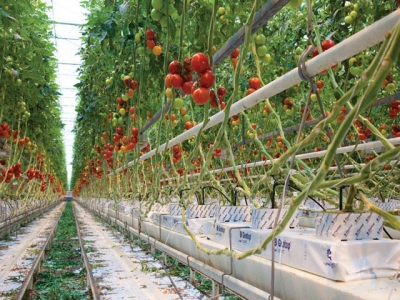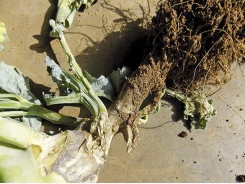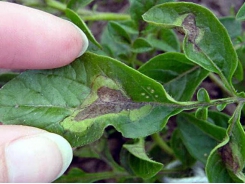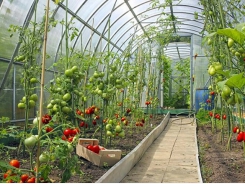How to Raise Plants in Your Greenhouse

Using a greenhouse to raise your own plants from seeds and cuttings has many advantages.
- You can grow plants that otherwise you would have to buy, such as bedding plants, tomatoes, and cucumbers. This saves money, gives a much wider choice of varieties, and reduces the danger of bringing in pests and diseases.
- You can give a head start to plants normally sown outside, eg. spring lettuce, summer cabbage, and annual flowers. As well as getting earlier crops, you reduce the risk of pests and diseases attacking the vulnerable young seedlings. This is an important way for organic gardeners to overcome some pest and disease problems.
- You can have great fun experimenting — growing houseplants from seed, or rooting cuttings from your favourite shrubs.
Although you can do some of this on your kitchen window-sill, a greenhouse gives you much more scope and generally much better quality plants.
Growing from Seed
This can be a cheap and easy way of producing plants. Also, since few diseases are carried in seeds, it is unlikely to introduce problems into your garden.
Whether you are growing vegetables, flowers, shrubs, or trees, it is important to find out the conditions that the seeds need to germinate and grow quickly.
Good seed
It would be ideal to use organically grown seed, but very little, if any, is commercially available. It is possible to save seed from your own garden, and for some crops and flowers this is well worth doing. The next best alternative is to buy seed from a company that does not chemically dress the seed after harvesting.
Store seed in a cool, dry place, not in the greenhouse. In warm, damp conditions, seed rapidly starts to lose its vigour, so germination becomes poor and so does the growth of resultant seedlings.
Correct temperature
In general, higher temperatures help seeds germinate more rapidly and get seedlings off to a better start. However, the correct temperature varies for different seeds: the germination of some seeds can be inhibited above, as well as below, certain temperatures.
- Lettuces sown in mid-summer: temperatures over 25°C can inhibit the germination of butterhead varieties; crispheads are a little less susceptible.
- Overwintering onions sown in late summer: temperatures over 24°C can inhibit germination.
Avoid problems by sowing these seeds in pots or modules in a shady place outside the greenhouse.
Seedlings also need the correct temperature for growth. They will not flourish if it is too cold, and will simply grow too quickly and become leggy and weak if it is too hot.
Moisture and air
As well as the correct temperature, seeds need water and air in order to germinate and grow. Using a good seed compost helps to ensure that it does not become waterlogged, which would deprive the seeds of air, cool them down, and encourage fungal diseases. This is particularly important for seeds that take a long time to germinate, such as parsley.
Light
Many seeds will germinate equally well in light or darkness. However, some will not germinate without light, whilst others, eg. pansies, do better in the dark. Watch out for specific instructions on the seed packet.
As soon as you can see that the seeds have germinated, keep them in good light but out of direct sunlight.
Special conditions
Some seeds need special treatment before sowing.
Pre-chilling seeds
Some seeds, particularly wild flowers, shrubs, and trees seed prechilling to break their dormancy, so they will not germinate until they have experienced a period of cold or a sequence of cold and warmth. This is natures way of ensuring that they come up in spring and not just as the hardship of winter begins. You can trick the seeds into germinating by giving them an artificial winter in the fridge. Put the seeds, mixed in a small amount of damp seed compost, in a polythene bag and place the sealed bag in a refrigerator (not the freezer), for the time recommended for that particular variety — usually about three to six weeks. After this time, remove them from the refrigerator and spread the compost from the bag on to the surface of a filled seed tray, and keep it in the light at the normal temperature for germination. The alternative is to sow the seeds in autumn and leave the pot or tray in a cold frame or plunged up to its rim in the soil in a sheltered spot in the garden, and then bring it into the greenhouse in spring.
Common examples of seeds which need pre-chilling include angelica (A. archangelica), sweet cicely (Myrrhis odorata), and primroses (Primula spp. ).
Soaking seeds
The hard coats of some seeds can be softened by leaving the seeds in tepid water for a few hours; this will also help to leach out any substance which inhibits germination. Common examples of seeds for which soaking can speed up germination include morning glory, New Zealand spinach (Tetragonia expansa), and beetroot.
Chipping seeds
The surface of some hard seeds needs to be chipped with a knife or scratched with emery-paper to allow water to pass through. Common examples of seeds for which chipping or scratching can help germination include bluebell (Hyacinthoides spp.), cranesbill (Geranium spp.), and hard sweet pea (Lathyrus spp.) seeds.
Related news
Tools

Phối trộn thức ăn chăn nuôi

Pha dung dịch thủy canh

Định mức cho tôm ăn

Phối trộn phân bón NPK

Xác định tỷ lệ tôm sống

Chuyển đổi đơn vị phân bón

Xác định công suất sục khí

Chuyển đổi đơn vị tôm

Tính diện tích nhà kính

Tính thể tích ao




 Get to understand Sclerotinia
Get to understand Sclerotinia  Planning a Garden Greenhouse for Organic Gardening
Planning a Garden Greenhouse for Organic Gardening